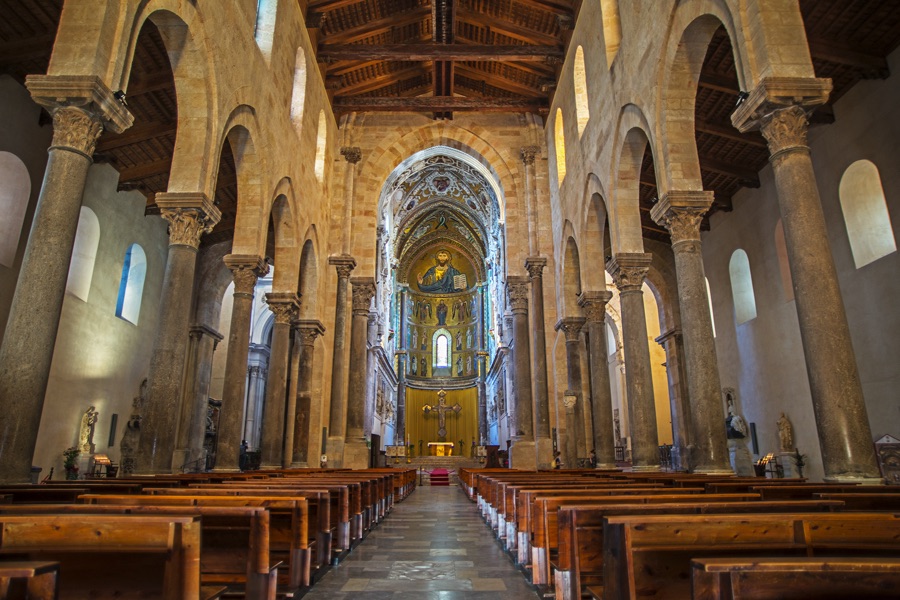The influence of the Benedictine-Cluniac planimetric schemes, which can be traced back to the second Cluny Abbey, soon arrived in Sicily, with models visible both in the Cathedrals in Catania and Cefalù. In the second reconstruction of the Cluny Abbey, consecrated in 981, a choir with aisles and an ambulatory was designed and emphasis was placed on the presbytery which, in addition to being large, had two apses on the transept. The interior had three naves with a longitudinal plan and seven bays. It is currently only visible and known thanks to the results of archaeological excavations (Conant’s in 1968) because it was demolished in 1118 and the last remains disappeared in the 18th century. However, believing it to not be spacious enough to hold all the worshippers, Abbot Hugh began a third, larger project for the abbey in 1088. Because of this third reconstruction, known as Cluny III, the abbey faced considerable economic difficulties which led to it’s decline from the 13th century onwards. Today, very little remains of the original structures.